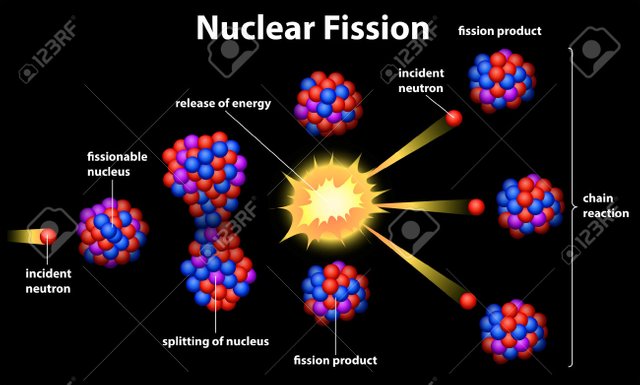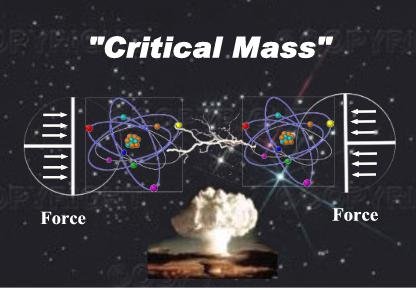Energy Sources Explained Part 07: Nuclear Fission
Nuclear Fission
Nuclear Fission is the the main way for our civilization to use nuclear reactors for the produce of electricity. There are over 440 commercial nuclear power reactors operable in 31 countries. They provide about 11% of the world's electricity as continuous, reliable base load power, without CO2 emissions.
Nuclear Fission basics
When a nucleus fissions, it splits into several smaller fragments. These fragments, or fission products, are about equal to half the original mass. Two or three neutrons are also emitted. The sum of the masses of these fragments is less than the original mass. This 'missing' mass has been converted into energy according to Einstein's equation (about 0.1%). Fission can occur when a nucleus of a heavy atom captures a neutron. It can also happen spontaneously.
Critical Mass
Although two to three neutrons are produced for every fission, not all of these neutrons are available for continuing the fission reaction. If the conditions are such that the neutrons are lost at a faster rate than they are formed by fission, the chain reaction will not be self-sustaining. At the point where the chain reaction can become self-sustaining, this is referred to as critical mass. By using a neutron reflector, only about 11 pounds (5 kilograms) of nearly pure or weapon's grade plutonium 239 or about 33 pounds (15 kilograms) uranium 235 is needed to achieve critical mass.
Why Uranium and Plutonium?
Scientists knew that the most common isotope, uranium 238, was not suitable for a nuclear weapon. There is a fairly high probability that an incident neutron would be captured to form uranium 239 instead of causing a fission. However, uranium 235 has a high fission probability.Of natural uranium, only 0.7% is uranium 235. This meant that a large amount of uranium was needed to obtain the necessary quantities of uranium 235. Also, uranium 235 cannot be separated chemically from uranium 238, since the isotopes are chemically similar.Alternative methods had to be developed to separate the isotopes. This was another problem for the Manhattan Project scientists to solve before a bomb could be built.Research had also predicted that plutonium 239 would have a high fission probability. However, plutonium 239 is not a naturally occurring element and would have to be made. The reactors at Hanford, Washington were built to produce plutonium.
Source Links:
http://www.atomicarchive.com/Fission/Fission1.shtml
http://www.diffen.com/difference/Nuclear_Fission_vs_Nuclear_Fusion
Thanks for reading feel free to follow, vote and Re-esteem if you find it useful.
You can find more articles of mine here: https://steemit.com/@diasdr
Energy sources explained part 01: https://steemit.com/science/@diasdr/energy-sources-explained-part-01-energy-units
Energy sources explained part 02: https://steemit.com/science/@diasdr/energy-sources-explained-part-02-coal-history-usage-and-drawbacks
Energy sources explained part 03: https://steemit.com/science/@diasdr/energy-sources-explained-part-03-wind-power
Energy sources explained part 04: https://steemit.com/science/@diasdr/energy-sources-explained-part-04-solar
Energy sources explained part 05: https://steemit.com/science/@diasdr/energy-sources-explained-part-05-geothermal-for-house-use
Energy sources explained part 06: https://steemit.com/science/@diasdr/energy-sources-explained-part-06-energy-producing-houses-and-how-to-profit


